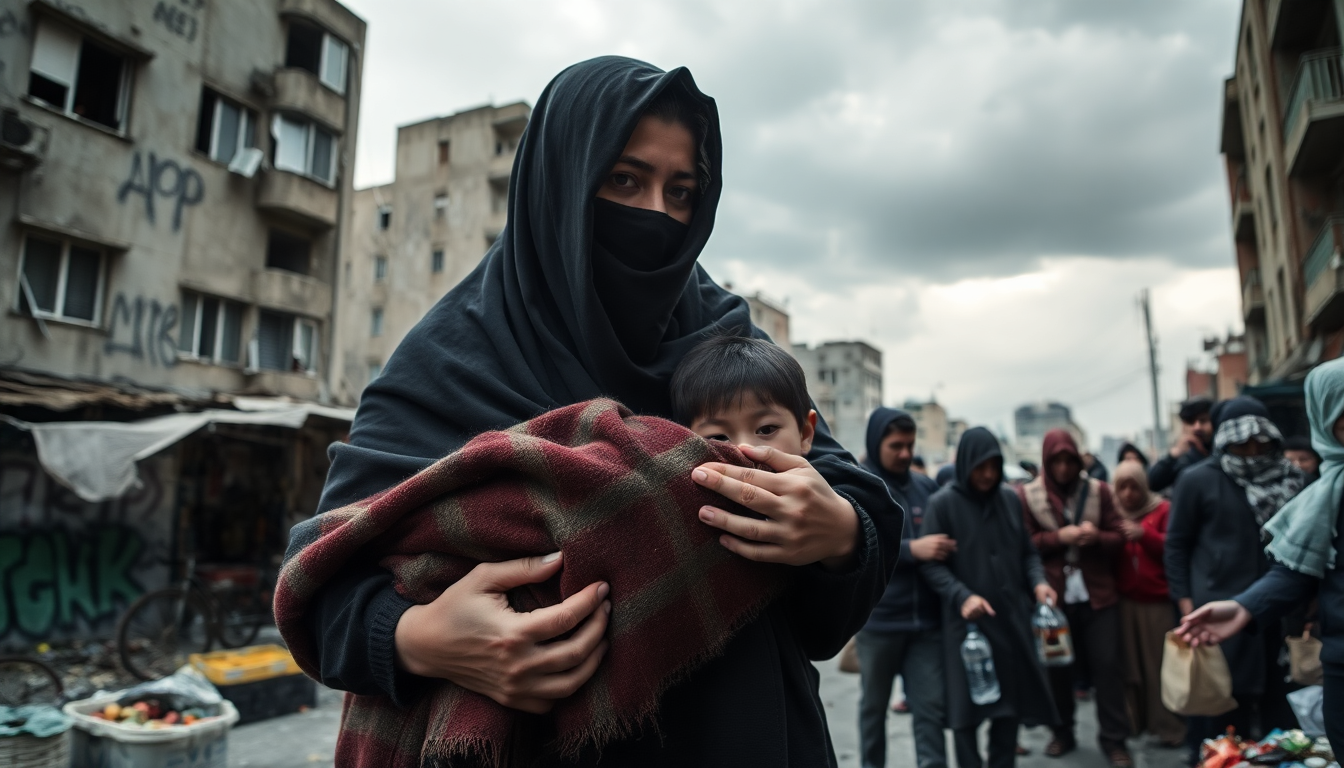Table of Contents
The situation for Afghan refugees in Tehran is becoming increasingly desperate. Having fled one danger zone, they now find themselves grappling with another. These individuals often feel like a forgotten population amid global conflicts, constantly searching for safety and stability. The recent bombardments in Tehran have only intensified their vulnerability, underscoring the urgent need for attention to their plight.
The Vulnerability of Afghan Refugees
Take Shamsi, a 34-year-old Afghan mother of two. Her story is a reflection of the fears shared by many in her community. After escaping the oppressive Taliban rule in Afghanistan just a year ago, she sought refuge in Iran, believing it would provide her family with safety. But the recent surge in violence in Tehran has left her feeling more at risk than ever. As missiles fell on the city, she rushed home to find her daughters terrified, huddled beneath a table. Can you imagine the fear they must feel?
Shamsi’s experience is far from unique. Like many Afghans who have sought asylum in Iran, she entered the country on a temporary visa. However, navigating the complexities of renewing their legal status has left her family undocumented and vulnerable. Without legal residency, Shamsi faces significant hurdles: securing stable employment, opening a bank account, and accessing essential aid. The lack of support from local Iranians or international organizations only compounds their struggles.
The ongoing internet blackouts in Tehran have made it even harder for refugees to stay connected or reach out to loved ones. Shamsi shares how she and her family navigate the city under constant police scrutiny, making even simple tasks like grocery shopping feel daunting. Many Afghans, including Shamsi, are left with no option but to endure the harsh reality of living in a conflict zone.
The Impact of Recent Conflicts
Iran is home to around 3.5 million refugees, a significant number of whom are undocumented Afghans. Since the Taliban regained control of Afghanistan, there has been a notable increase in vulnerable individuals crossing into Iran, seeking refuge from persecution. However, the recent conflicts in Tehran have starkly exposed their precarious situation. As Israeli strikes targeted various locations in and around the capital, many Afghans were painfully reminded of their vulnerability, lacking protection and access to emergency assistance.
The conflict has not only resulted in loss of life but has also intensified feelings of trauma and displacement among Afghan refugees. Reports indicate that several Afghans were casualties of the recent bombings, further escalating fears within the community. For many, like Shamsi, the looming threat of returning to Taliban-controlled Afghanistan makes their current situation in Iran feel just as perilous. How do you even begin to weigh such choices?
As violence escalated, the decision to remain in Tehran became fraught with danger. Shamsi’s family faces an uncertain future, worsened by financial instability and job loss. With her employer gone and no job prospects, she is left anxiously preparing for the worst. While the June 23 ceasefire provided temporary relief, it hasn’t solved the myriad challenges they continue to face.
Future Prospects for Afghan Refugees
Looking ahead, the road for Afghan refugees in Tehran is anything but clear. With Iran recently announcing plans to deport up to two million undocumented Afghans, fears of further displacement loom large. During the recent conflict, many have taken the desperate step of returning to Afghanistan, despite the known dangers. Reports suggest that thousands are crossing the border daily, often with little more than the clothes on their backs, traumatized and confused. Isn’t it heartbreaking to think about?
International organizations, including the UNHCR, have voiced serious concerns about the deteriorating humanitarian situation for Afghans in Iran, calling for immediate intervention. The lack of bureaucratic support leaves Afghan migrants in a perilous position, unable to claim unpaid wages or seek help from fleeing employers. Activists like Laila Forugh Mohammadi are tirelessly working to raise awareness about these critical issues, emphasizing the urgent need for intervention and support.
As tensions remain high and the threat of further violence looms, the plight of Afghan refugees continues to be a pressing concern. For families like Shamsi’s, the decision to stay is filled with anxiety, yet returning to Taliban rule is simply not an option. It’s time for the international community to recognize their struggles and take meaningful action to provide the support and safety that these individuals desperately need.


